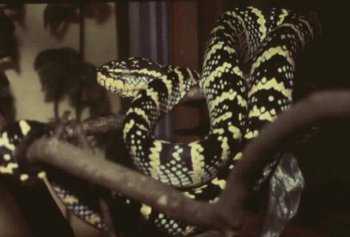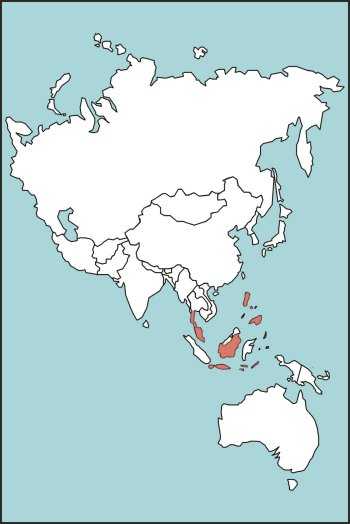Appendix E
DESCRIPTIONS OF VENOMOUS SNAKES
Wagler's pit viper or temple viper

Wagler's pit viper or temple viper
Trimeresurus wagleri
Description: Green with white crossbands edged with blue or purple. It has two dorsal lines on both sides of its head.
Characteristics: It is also known as the temple viper because certain religious cults have placed venomous snakes in their temples. Bites are not uncommon; fortunately, fatalities are very rare. It has long fangs. Its venom is hemotoxic, causing cell and tissue destruction. It is an arboreal species and its bites often occur on the upper extremities.
Habitat: Dense rain forests, but often found near human settlements.
Length: Average 60 centimeters (24 inches), maximum 100 centimeters (40 inches).
Distribution: Malaysian Peninsula and Archipelago, Indonesia, Borneo, the Philippines, and Ryukyu Islands (Figure E-43).
Figure E-43. Wagler's Pit Viper or Temple Viper Habitat
Survival index
All text and images from the U.S. Army Field Manual 3-05.70: Survival.
Appearance of the materials from the U.S. Army Field Manual here does not constitute or represent endorsement by probablyhelpful.com.
ProbablyHelpful.com is not responsible for inaccurate or outdated information provided by the U.S. Army Field Manual 3-05.70.

